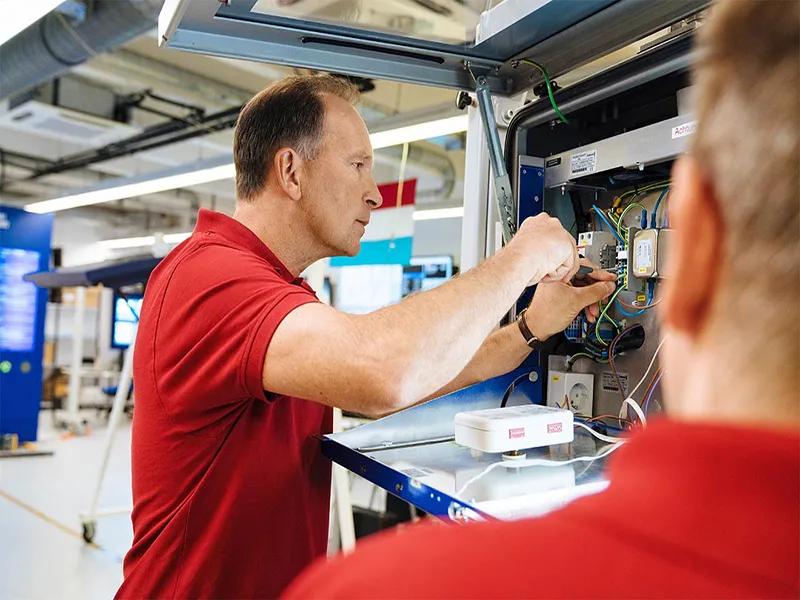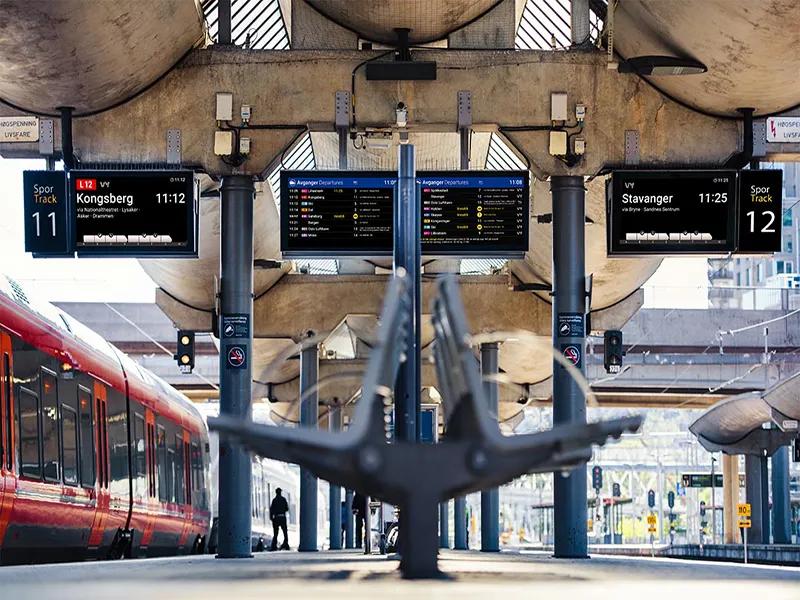Funkwerk Systems installs nationwide passenger information system for Norway
In Norway, the name KARI is synonymous with the new era of passenger information. The system from Funkwerk Systems GmbH ensures that passengers nationwide, from Oslo to Bergen, are supplied with real-time visual and audio information about rail services.
‘The passenger information covers more than 300 stations,’ said Christian Ringler, managing director of Funkwerk Systems. Bane NOR, Norway’s national railway agency, had some specific targets in mind. They wanted to improve passenger satisfaction, but they also wanted to have fully automated control over information output while simultaneously cutting down on manual processes.
Consequently, Funkwerk Systems GmbH worked closely with Bane NOR to come up with a system notable for its modular architecture. All functions are broken down into independent software sub-systems, which are visualised on one easy-to-use centralised user interface. In day-to-day workflows, this has led to a marked reduction in the workload involved in managing incidents, such as delays or service interruptions.
Real-time passenger information systems
KARI monitors the flow of information to some 1,300 display units all over Norway, and state-of-the-art text-to-speech technology is used to produce audio announcements. ‘The passenger information system is by no means a stand-alone system,’ said Ringler. To provide real-time data for other rail operators and their services, the SIRI (Service Interface for Real-Time Information) open standard has been implemented in KARI.
The Funkwerk passenger information systems provide up-to-date, reliable, consistent and high-quality information via all available methods. Coupled with convenient means of transport, they are key to improving the ways in which people get around in the future. The product range includes stationary, visual and audible systems for providing information to passengers in indoor and outdoor areas. The systems include highly complex control software for processing and delivering real-time data. They cover the entire journey, from planning to the place of departure through to arrival at the destination, and also incorporate deviations from normal service as well as suggestions for alternative routes and means of transport.

